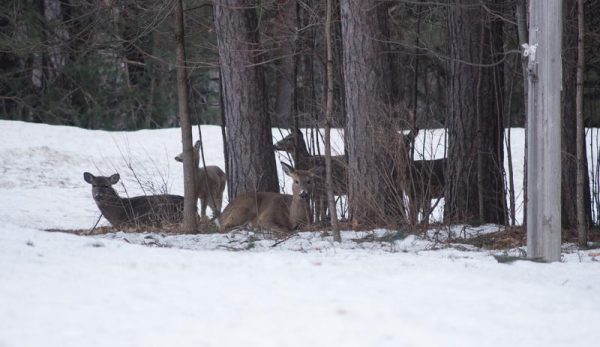
We all know the main advantages that windbreaks can offer on our farms. They can:
- reduce heating and cooling costs for our homes and barns
- shelter our livestock from cold winter winds
- help distribute snowfall and control erosion
- protect gardens and orchards from drying winds
- block sights, sounds, and smells
The list goes on and on.
But did you know windbreaks can also be beneficial to wildlife, with positive trickle-down effects for your farm? Depending on the specific trees and shrubs you plant, windbreaks can service a variety of birds and mammals.
And this, in turn, can provide both tangible and intangible benefits to your farm.
Read more: Here’s how to get started with windbreaks for the farm.
A Safe Haven for Birds
Birds of all sizes are among the beneficiaries of windbreaks, particularly if the outer rows are planted with small fruiting trees or shrubs (dogwoods, plums, cherries, etc.) that provide a source of food.
Some birds might even decide to nest in your windbreaks. So if you enjoy birdwatching, windbreaks can give your hobby a big boost.
But the benefits of attracting birds extend beyond quiet afternoons watching baby birds take their first flights. Birds consume insects, and windbreaks planted near gardens and orchards will benefit from enhanced pest control.
In addition, tall windbreak trees—standing in rows with fields on either side—are often preferred perching territory for birds of prey like eagles and hawks. These skilled hunters will help keep rodent populations in check.
A Boon for Pollinators
If the outer rows of your windbreaks are planted with flowering trees and shrubs, such as lilacs or crabapples, you’ll provide a food source for beneficial pollinators like honeybees, bumblebees, butterflies, and more. If your windbreaks are guarding an orchard or a garden, your fruit trees and vegetables plants are bound to benefit from the influx of pollinators drawn to your windbreaks.
In addition to providing a food source, windbreaks also reduce wind speeds, encouraging pollinators to take flight at times when they otherwise might not. An open field might be too windy for pollinator activity, but a protected field on the leeward side of a windbreak will be calmer and more inviting.
Read more: Keep an eye on woodland friends with a wildlife camera!
A Shelter and Food Source for Animals
While they offer fewer direct benefits to farms (and can be considered pests in some cases), deer, rabbits, squirrels and other animals will all appreciate the shelter and food provided by windbreaks.
Squirrels, for example, can be seen traveling from tree to tree in the fall. They harvest nuts and pinecones from the tallest trees.
The protection windbreaks provide can’t be overstated. During the winter, it’s not uncommon to see deer sleep in the midst of windbreaks. There, they’re protected from wind and snow.
Windbreaks can also provide travel lanes across otherwise open fields, particularly if they’re connected to adjacent woodlands. Windbreaks like these offer a safer means for wildlife to travel from one section of woods to another without stepping into the unguarded open.
As with birdwatching, if you take pleasure in watching wildlife, windbreaks can encourage a wider variety of woodland critters to cross your land. Mounting a wildlife camera on the trunk of a windbreak tree will even reveal animals that visit under the cover of darkness.
If you haven’t already planted windbreaks on your farm, what are you waiting for? As the old saying goes, the best time to plant a tree was 20 years ago. The sooner you get started, the sooner you’ll reap the benefits of wildlife attracted to your windbreaks!




